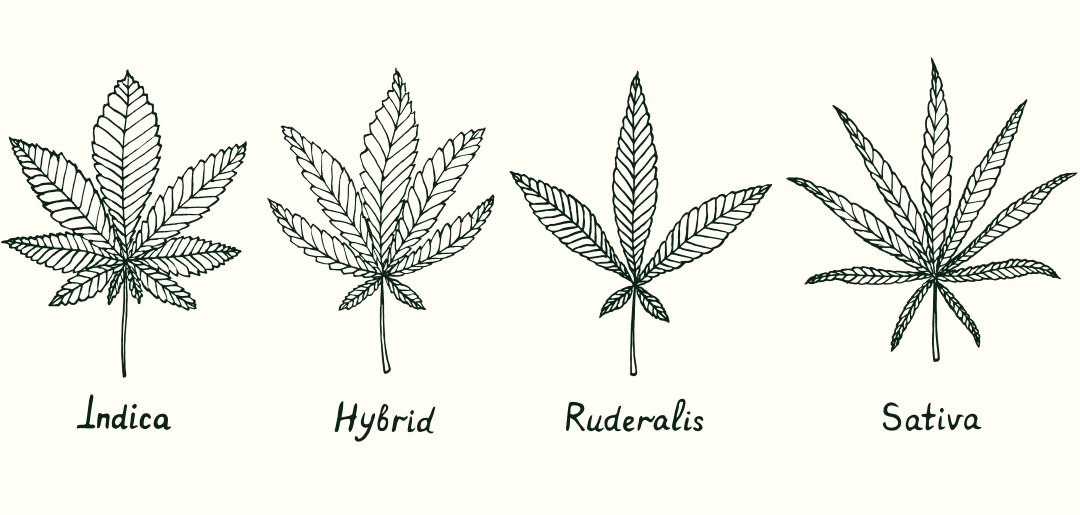The marijuana industry has experienced a significant shift over the last two decades. Cannabis is no longer considered a harmful substance and is currently recognized as legal in some US states.
Like other plants, cannabis is either a pure breed or a hybrid of different strains. Pure strains and current hybrids are continuously combined and remixed as the industry becomes more commercialized. Sativa and Indica are the two main varieties of marijuana, but the mix of these two is widespread nowadays. These new plants are called hybrids.
So, keep reading if you want to find out more about the facts and myths surrounding hybrids!
Fiction #1: Hybrids combine a 50/50 mix of Sativa and Indica
Some growers identify their products with precise labels, such as Sativa or Indica-dominant, but these terms can be misleading. While Sativa-dominant profiles (or vice versa) are typical in hybrids, cross-breeding is much more complicated than harvesters would have you believe.
Fact: Hybrid strains don’t always have an equal split of Sativa and Indica
It would be oversimplified to say that hybrids deliver “balanced” effects; at most, it would be a cunning marketing ploy. Any grower will tell you that almost every strain available is a hybrid; however, this is based on plant chemistry rather than just the effects.
Consideration of terpene (smell and taste) and cannabinoid (THC, CBD, CBN) content is the best technique to detect strain effects. Instead of relying solely on general labels, you can make better-informed selections by understanding these characteristics.
Fiction #2: Hybrids combine Sativa and Indica effects
There are numerous descriptions of strain effects on product labels. You’veThe ideal balance between the effects of Sativa and Indica is said to exist in hybrids. probably heard that Sativas elevate the spirits and stimulate the mind, while Indicas soothe the body and promote relaxation.
Fact: Hybrid strains offer variable effects
Cannabis hybrid strains have an eclectic range of different effects. Each strain is entirely distinct since there are so many ways to combine and contrast the properties of the cannabis plant.
Scientific evidence does not support the notion that different effects result from one plant phenotype expression, e.g., Sativa is always energizing, and Indica is always soothing.
Recent research and consumer comments have shown that this isn’t always true—in some circumstances, it’s quite the opposite. And this proves once more how different the cannabis experience is depending on the user.
Fiction #3: Indicas produce a potent high
It’s not unusual for people to ask about potency when visiting a dispensary. Some believe that the better the buds, the greater the number. You’ve certainly seen the terms like “couch-lock,” “body high,” and “sedative” on Indica products.
Fact: More THC doesn’t necessarily make you higher
This argument presents various difficulties for customers. One is that it doesn’t consider a person’s tolerance. According to some studies, high-THC strains don’t make you feel “higher”; this is based on self-reported survey data from study participants who used different potencies.
However, this does not include edibles, so use them with caution. But when it comes to potency, the delivery method is essential to keep in mind.
Fiction #4: Indicas, Sativas, and Hybrids classification is not outdated
Although the cannabis industry has long employed the Indica, Sativa, and hybrid classifications, they now seem to be incorrect. The truth is that the conventional classification system is outdated and should be abandoned if scientific accuracy is the main priority.
Fact: The Indica vs. Sativa vs Hybrid Model has little scientific credibility
Sativa and Indica are both genetically related to the Cannabis sativa L. species. As a result, we can’t attribute the effects to Indica or Sativa alone but rather to the entourage effect that happens with all strains when cannabis enters the body. The entourage effect suggests that flavonoids, terpenes, and other cannabinoids—not just THC—combine to provide a distinctive experience.
Think about this. In a 2015 study, scientists examined dozens of cannabis samples with either Indica or Sativa labels. They concluded that the Indica-Sativa distinction “only partially capture[s] the fundamental axis of marijuana’s genetic structure” because they didn’t detect any significant genetic differences between the two types of marijuana.
Fiction #5: Hybrid cultivars are genetically identical
Hybrid cultivars combine Sativa and Indica genetics. Recent genetic tests of the cannabis plant from many cultivators show that many cultivars are not what subspecies growers believe them to be.
Fact: Hybrid cultivars are not what growers think
With the research of the genetics of various cultivars from different growers, it becomes clear that the different phenotypes are not genetically identical and not the same subspecies.
Since cultivars have been crossed over the years, the gene pool of all cultivars has been significantly altered to the point that an expressed phenotype of Indica is genetically Sativa and vice versa. So this causes cultivars to be incorrectly labeled as Indica or Sativa.
Today, we have a more profound understanding of marijuana. For example, we know that a strain’s effects depend more on its CBD-to-THC ratio and terpene profile than on whether it is an Indica or Sativa variety.
As mentioned before, terpenes like linalool, pinene, and caryophyllene, cannabinoids, the entourage effect, and the delivery method all play a significant role in the differences between the strain types. So, keep in mind that the best way to understand the effects of cannabis is as existing on a spectrum.

 Accessories
Accessories Apparel
Apparel Edibles
Edibles Concentrates
Concentrates Flower
Flower Oil Cartridges
Oil Cartridges Pre-rolls
Pre-rolls Tinctures
Tinctures Topicals
Topicals